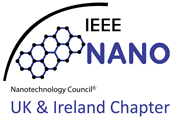
This seminar will show the recent discovery of light-induced electromagnetic asymmetry in symmetry-broken plasmonic nanocavities and its critical role in surface second-harmonic generation. It will then demonstrate that marrying these small-scale photonic cavities with low-dimensional quantum materials can realise several high-performance functional photonic and optoelectronic devices.
Finally, perspectives on unleashing the full potential of hybrid cavity-quantum-materials paradigms for single-molecule quantum sensing, quantum light emission and quantum information processing will be shared.
This is a hybrid event. The remote link will be shared with registrants prior to the event.
About the Speaker
Dangyuan LEI is Professor of Materials Science and Engineering at the City University of Hong Kong. He received a PhD degree in Physics from Imperial College London in 2011, with his thesis awarded the Anne Thorne PhD Thesis Prize. His current research interest centres on plasmonic nanophotonics and low-dimensional quantum materials, with particular interest in the nanoscale cavity-matter interaction and applications in miniaturised photonic and optoelectronic devices for on-chip optical sensing and imaging, energy harvesting, conversion, storage and saving.
He has co- authored 210 publications, received 11300 citations and an h-index of 60 (Google Scholar as of October 2023), and given 1 plenary talk, 6 keynote speeches and >100 invited talks. His publications include 8 Nature Communications, 2 Science Advances, 5 NPG Light: Science & Applications, 4 Physical Review Letters, 25 Advanced (Functional/Energy/Optical) Materials, and 25 Nano Letters and ACS Nano etc.
Three publications have been highlighted as “Editor’s Choice” of Science (2020) and “Research Highlights” of Nature Materials (2010 & 2011), respectively. He is currently an elected member of the Hong Kong Young Academy of Sciences, an OSA Senior Member, a member of SPIE, IOP and PSHK, and a National Science and Technology Expert of MOST.


